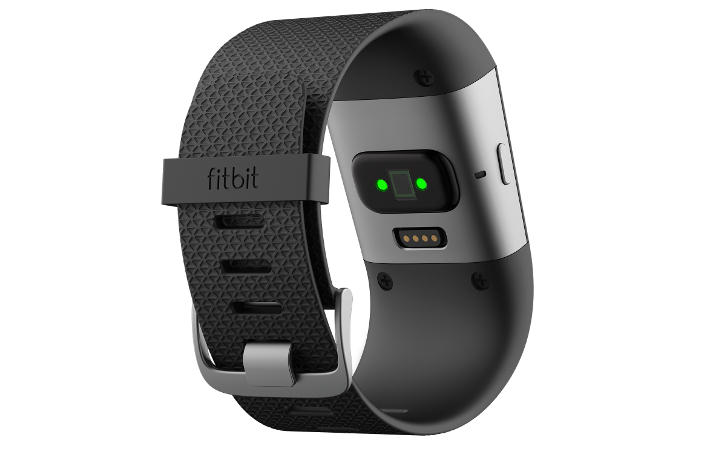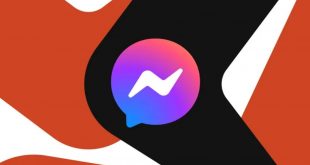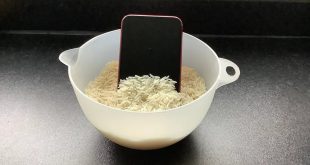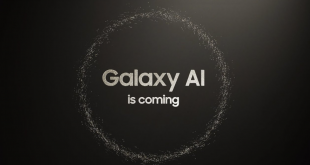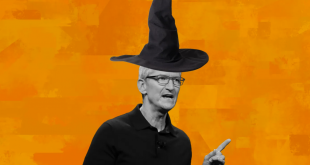Fitness tracking systems seem to be the latest trend among gadget lovers. They come in all kinds of shapes and offer a multitude of features. Some were designed solely for tracking, others to be worn like fashion accessories. All major tech companies have at least one device of this kind on the market. Of course, there are unknown or less known companies also that manufacture tracking devices and smartwatches. Today we decided to take a look at Microsoft’s latest tracking device, the Microsoft Band 2 and the Fitbit Surge.
Fitbit Surge
The Fitbit Surge is on the list of best tracking devices released this year. The list doesn’t include Microsoft’s Band 2 because it wasn’t released before the list was made. The Fitbit Surge isn’t the most eye-catching tracking system ever made, that’s for sure. It is quite big and looks a little bit dated. It might be a great tracking device but he Fitbit Surge probably won’t become anyone’s favorite fashion accessory. Its strap is quite large and seems to be uncomfortable when worn for a longer period of time. The Fitbit Surge has a square, 1.25- inches black and white display. The display of the Fitbit Surge is a backlit, always- on touchscreen. It also features three physical buttons on its sided to make scrolling between different functions easier and faster.The Fitbit Surge is available in black, blue and tangerine colors. The fact that users can only interchange four watch faces doesn’t really help either in making the Fitbit Surge a more appealing accessory.
The hardware of the Fitbit Surge tracking device is a lot more interesting than its looks. The Fitbit Surge now features built- in GPS which makes it one of the best tracking devices for runners. Just like any other serious tracking device nowadays, the Fitbit Surge includes a heart rate monitor that is not situated in its strap, instead it was placed on the back of the device. It also has sleep monitor, which can get things wrong when set to sensitive mode, and a pedometer also. The battery of the Fitbit Surge is quite disappointing also. It can last for about a week between two charges. That is if you don’t really use your Fitbit Surge. When you do, and you even use the GPS function of the Fitbit Surge, the battery life will surely drop. And if you are going to use the Fitbit Surge on a regular basis for serious training, don’t expect to get more than two days of battery life from your Fitbit Surge.
The software part of the Fitbit Surge is a lot better than its predecessors’ was. The Fitbit app not only looks a lot better on your smartphone, it also functions a whole lot better. Its database of food and nutritional data was extended, so now is can count the number of used calories faster than ever. The new and improved software the Fitbit Surge also improved the sleep monitor. If you don’t use the sensitive mode, the Fitbit Surge will automatically detect when you are asleep and will deliver accurate data about the quantity and quality of your sleep.
Exercise tracking became a lot easier and more appealing. The GPS maps combined with the improved sensors and the new software of the Fitbit Surge certainly offer a higher quality user experience than previous Fitbit devices did. But will these surpass the dated design and the fact that it doesn’t really work well with notifications and messages? Its $249 price can certainly buy you better devices than this.
Display
- Touch screen
- Monochrome LCD
- Backlight for low light visibility
Sensors and Components
- GPS
- 3-axis accelerometers
- 3-axis gyroscope
- Digital compass
- Optical heart rate monitor
- Altimeter
- Ambient light sensor
- Vibration motor
Battery and Power
We recommend charging your Surge every few days to ensure you are always tracking.
- Battery life: last up to 7 days
- GPS Battery life: last up to 10 hours
- Battery type: Lithium-polymer
- Charge time: One to two hours
- Radio transceiver: Bluetooth 4.0
Memory
- Tracks 7 days of detailed motion data – minute by minute.
- Tracks daily totals for past 30 days
- Stores heart rate data at 1 second intervals during exercise tracking and at 5 second intervals all other times
- Sample rate for GPS is 1 Hz
Syncing
Surge syncs automatically and wirelessly to tablets, computers and 150+ leading iOS, Android and Windows smartphones using Bluetooth 4.0 wireless technology.
Microsoft Band 2
Microsoft’s Band 2 definitely looks a lot better than its previous version. It now features a curved screen, protected by Corning Gorilla Glass, both for its looks and durability. The strap is also a lot more comfortable now than it was on the original Microsoft Band. The Microsoft Band 2 features a color display, which is actually a 32 x 18mm, 320 x 128 pixel AMOLED screen. It has vibrant colors, so it is definitely a lot less dull than the Fitbit Surge. It also doesn’t look dated, like the Fitbit Surge does. Its curvy lines and less chunky strap make the Microsoft Band 2 almost desirable as a fashion accessory. But then again, it was not meant to be a fashionable accessory, instead it should be a great tracking device, created for athletes.
The new Microsoft Band 2 was added a number of features its predecessor lacked. Just as the Fitbit Surge, the Microsoft Band 2 comes with built- in GPS making it great for both running and cycling, alongside a number of other sensors. The Microsoft Band 2 was equipped with an optical heart rate sensor, a 3- axis accelerometer, a gyrometer, GPS, ambient light sensor, skin temperature sensor, UV sensor, galvanic skin response and a barometer. It also features a capacitive sensor and a microphone. Just like the Fitbit Surge, the Microsoft Band 2 is also available to track sleep and the number of calories burnt while exercising. The Microsoft Band 2 is equipped with a Lithium- Polymer battery that is meant to ensure 48 hours of active use. When used with GPS the battery life will become a lot shorter, so keep that in mind if you would use it away from home. Do’t forget to take your charger with you.
Although hardware- wise it might seem that the Microsoft Band 2 is not much better than the Fitbit Surge, the software of the device will probably make the difference in users’eyes. The Microsoft Band 2 wearable includes Cortana, the personal assistant that will keep track of everything you do. This feature is responsible for workout reminders, guided workouts and smartphone notifications. Speaking of notifications, these will definitely work smoother on the Microsoft Band 2 than on the Fitbit Surge. The Microsoft Band 2 is compatible with Windows Phones, iOS and Android devices, so the smartphone make you use will not make a difference in the user experience quality of the Microsoft Band 2.
After the disappointment the Microsoft Band was, the Microsoft Band 2 is truly a great surprise. Microsoft improved its wearable in every single way. It is a lot more appealing, and functions are better than the ones included in the original Microsoft Band. It is a very useful and eye- catching device although it probably won’t be considered to be a competitor against the smartwatches released this year by tech giants, On the other hand, the Microsoft Band 2 is a tracking device, not a smartwatch, so users shouldn’t expect it to behave like one. The price of the Microsoft Band 2 is the same as the Fitbit Surge’s, being available for pre- order for $249.99.
Display
- Touch screen
- Full color AMOLE
- 320 x 128 pixels
Sensors and Components
- Optical heart rate sensor
- 3-axis accelerometer/gyro
- Gyrometer
- GPS
- Ambient light sensor
- Skin temperature sensor
- UV sensor
- Capactive sensor
- Galvanic skin response
- Microphone
- Barometer
Battery and Power
- 48 hours of normal use; advanced functionality like GPS use will impact battery performance
Syncing
The Best Tracking System in 2015 is:
The Microsoft Band 2. At least out of these two devices. The Microsoft band 2 looks a lot better than the Fitbit Surge, with its curved, color display and comfortable strap. It offers the same and more sensors and features than the Fitbit Surge does. It also seems to work more fluently than the Fitbit Surge. Of course, since the Microsoft Band 2 will only hit the stores at the end of this month, users still coud report further flaws in the Microsoft Band 2, but we don’t think that these will be more serious problems than the ones reported by Fitbit Surge users. Given the fact that their price is the same, the Microsoft Band 2 will probably be chosen by more users than the Fitbit Surge, if not for its functionality, then for its greater design. Which one would you choose to wear?
 Tech Gadget Central Latest Tech News and Reviews
Tech Gadget Central Latest Tech News and Reviews
